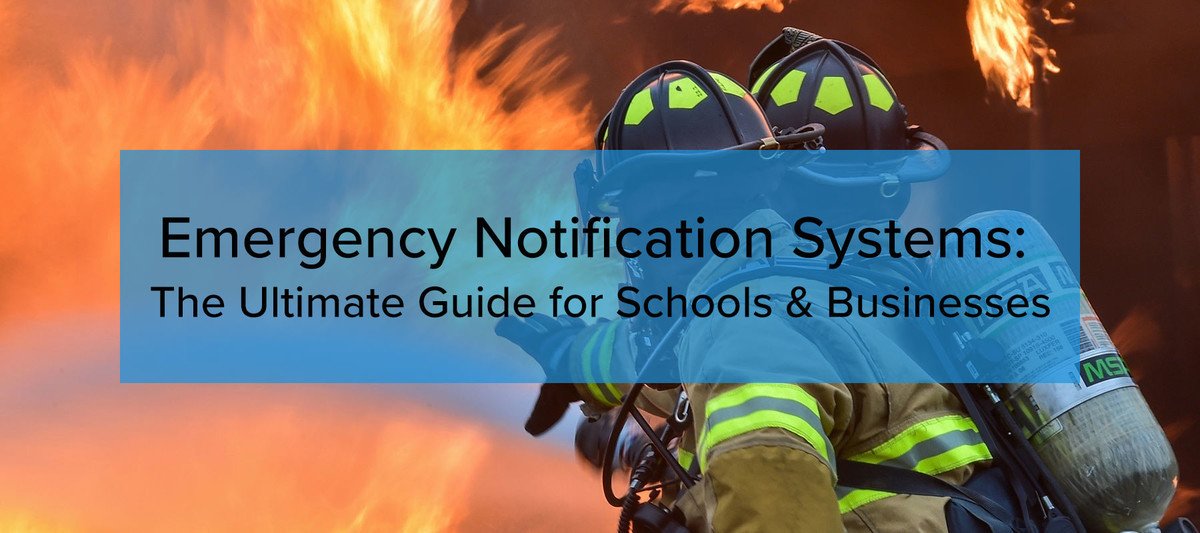
Emergency Notification Systems: The Ultimate Guide for Schools and Businesses
An emergency notification system (ENS) is a tool or a set of tools that lets you pass urgent messages out quickly to everyone who needs to know.
That means the real remit of an ENS is wider than the name suggests. Beyond bona fide crises, ENS can be required to communicate non-urgent information too, which is why these systems are sometimes referred to as mass notification systems. They’re sometimes used to communicate upcoming events or remind audiences about ongoing ones — blood drives, examinations, or school trips, for instance — as well as emergency alerts.
ENS is needed by organizations like schools, businesses and hospitals. Less-formalized arrangements like neighborhood phone trees can be regarded as ENS; so can the highly-formalized, wide-ranging national emergency broadcast system.
However, as organizations grow in size and complexity, and communication channels proliferate, the demand for specialized solutions grows too: Grand View Research expects the market for emergency notification systems to top $16 bn by 2025.
How did the modern ENS evolve, and what should businesses and schools look for in an emergency notification system?
Background: a quick history of emergency notification systems
(If there’s an emergency on, feel free to skip this section.)
Early forms of emergency notification system included trumpets, banners, bonfires and, yes, shouting; anything to let large numbers of people get the message quickly.

The essence of what we’re trying to achieve with them hasn’t changed much since, but technique gradually improved. In a small group, one person sees a danger no-one else sees, so she waves her arms and shouts so everyone else knows the danger is there. Larger groups can’t work that way, so we get church bells, air raid sirens, town criers, megaphones and increasing efforts to stitch together alert systems.
Incredibly, the leap to electrical alert techniques didn’t happen in America until 1941; prior to that, you’d have to wait for the newspaper to cover it or for a radio station to pick it up, but after Pearl Harbor, all US radio stations were tied into a national alert network; if something similar happened again, everyone within earshot of a radio would hear the same, pre-prepared emergency alert.
Once the nationwide ENS went electronic, it didn’t stop; ten years later, CONELRAD (short for Control of Electromagnetic Radiation) broadcast across radio and TV, incorporating a jamming signal supposed to prevent the Soviets from listening in. Alerts would now reach radio and TV audiences simultaneously and instantly.
Currently, the USA relies on a system called EAS (Emergency Alert System), which combines broadcast, cable and satellite TV, radio, landline phones, and wireless devices. This means that emergency messages can be communicated to anyone who’s online, has a phone or is watching TV or listening to the radio.
Within organizations, we’ve also progressed from shouting and waving our arms; Schools, hospitals and railway stations use tannoys and loudspeakers, as well as signage on walls and floors; airplanes have light-up floor signage. Businesses use email and SMS to communicate emergency alerts as well as more standard messaging to staff.
Universities and airplanes alike issue materials that guide you in advance so you’ll be prepared in an emergency. (Air passengers and students alike seldom read them or take them in.) And depending on what you classify as an emergency, many services, from municipal busses and garbage collection to local PDs and doctors’ offices, will alert you via mobile app or text when circumstances change.
Whether it’s around the nation, the neighborhood or the school building, emergency alert systems have developed similarly because they’re under similar requirements.
How can businesses use ENS?
The first big push towards ENS adoption in businesses came after 9/11, when business administrators realized they had no systems in place to issue alerts to staff, visitors, contractors and anyone else who might be on-site. Almost 60% of businesses have already moved to implement ENS:
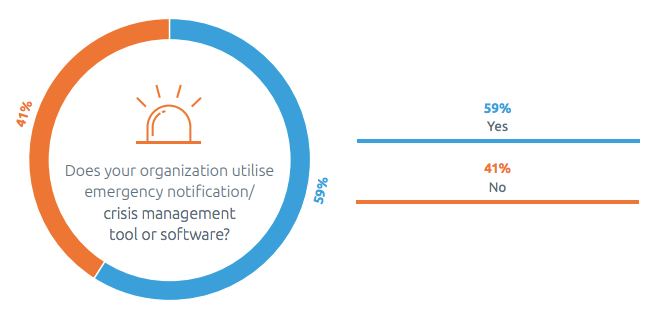
In a business, members of staff have different responsibilities in a crisis. Some may be tasked with leading others to safety while some may be trained first-aiders or have specific duties to the organization or its stakeholders.
Usually, it’s optimal to broadcast emergency information on as many channels as possible, but sometimes it makes sense to target specific audiences on the basis of duties, location, attendance or responsiveness. Additionally, not every channel is appropriate to every member of staff — for instance, in-building signage may be invisible to workers with outdoor or field roles, or voice announcements may be inaudible to those with hearing loss.
In addition to bona fide emergencies, businesses can use the same tools and infrastructure to make other announcements and communicate with staff for other reasons, such as making calls for shifts to be filled, or asking for help on projects. One additional benefit of using the ENS for non-emergency activity like this is that when a genuine emergency arises, everyone is familiar with the system and knows how to use it.
What should businesses look for in an ENS?
The majority of business ENSs employ emails and text messages, with crisis phone lines and emergency communications software close behind.

Business emergency notification systems should include:
Fully-integrated mobile application
Deliver alerts and receive responses across wifi and mobile data connections. This should be via phone alerts that make the device ring or vibrate, as with messaging applications like WhatsApp, in order to quickly get the user’s attention.
SMS messaging
Rich text or HTML SMS allows adding color and design to messages, but SMS should be a bare minimum for a fully-fledged ENS. SMS is a robust messaging tool that usually gets through, and 90% of recipients will read an incoming text message within three minutes of receipt.
Desktop alerts
Deliver pop-up or push notifications to staff computers while they’re at their desks. A desktop alert system should deliver notifications in front of open applications so that staff are alerted immediately, rather than in the background. Where possible desktop alerts should not resemble browser alerts or standard communications, so that staff clearly recognize their import and urgency.
Digital Signage
Smart signage throughout the building should display alerts in a way that’s commensurate with their urgency, and be integrated with the overall notification system so that messaging is consistent and simultaneous.
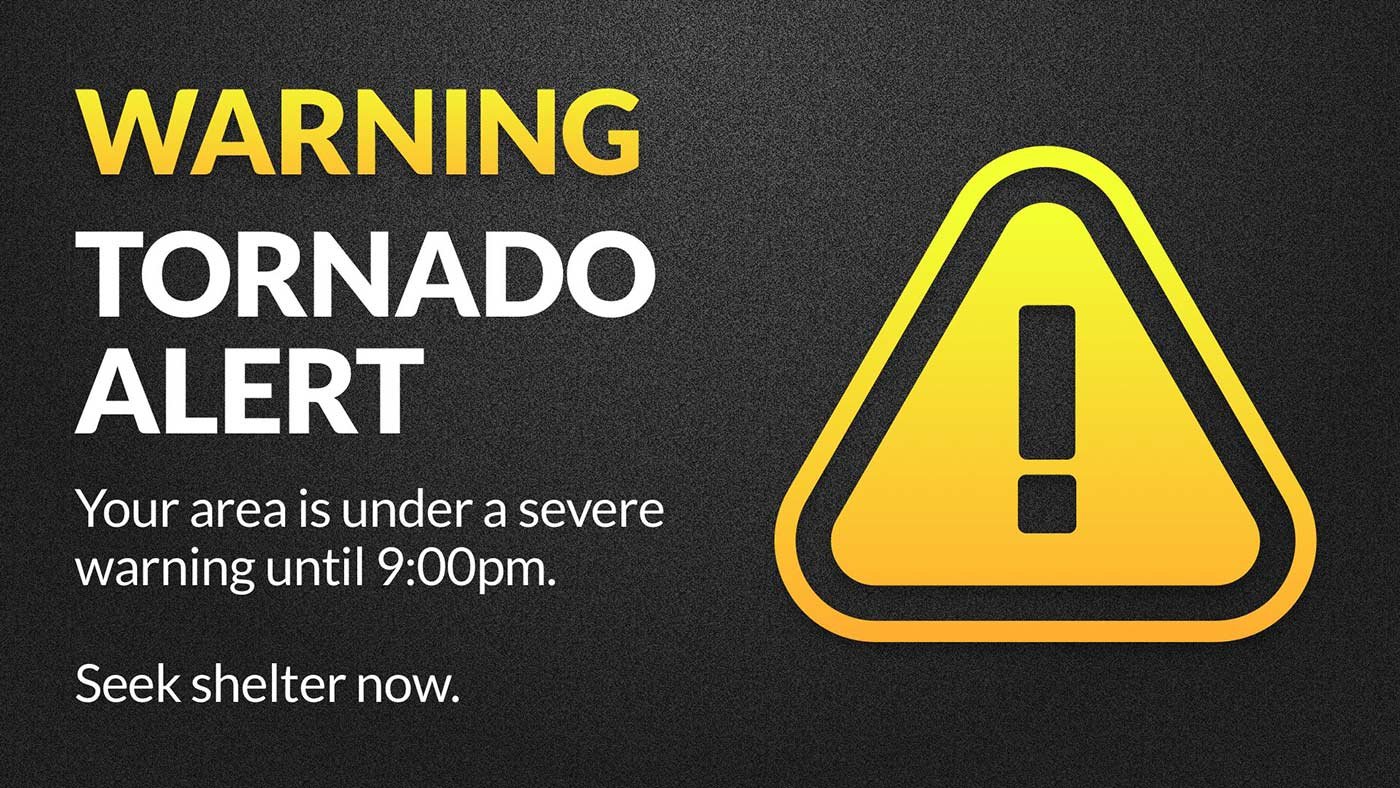
Voice notification
Voice notification should be used to gain attention quickly and pass on extremely time-sensitive information. Background noise and audience reactions can mean voice notifications need to be restricted to short messages, which often aren’t fully processed in emergencies — and there’s no realistic way to make voice notifications interactive.
Geo-polling
Advanced business emergency notification systems will send simple form questions with multiple-choice answers, particularly targeting staff in areas known to be in danger or who have not already responded to emergency messages. Here’s ENS provider Rave’s example:

How can schools use Emergency Notification Systems?
School uptake of emergency notification systems is lower than businesses’ — around a quarter to a third, across the sector, with college uptake outstripping K-12:
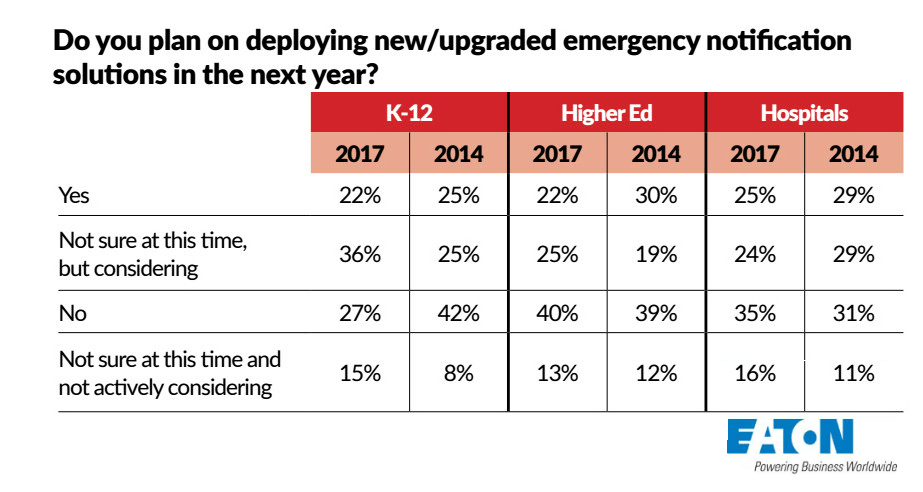
Just like businesses, schools can use emergency notification systems in more roles than just during full-bore crises. In schools, these systems are usually referred to as CAPs, for Common Alert Protocols, and they’re already in use in thousands of schools across the country.
Schools are unusual in that they’re not one mass audience, but many, all in the same physical space. The demands of those differing audiences, and the fact that they all have to share the same spaces in the school, means that an EMS for schools needs to be adaptable and flexible.
It will need to cover:
- Scheduling school bells
- School event cancellations
- Attendance and lateness notifications
- Early dismissal reminders
- Volunteer requests
- Field changes, schedule updates and practice reminders for sports teams
- Disease outbreak notifications and update — including milder, on-premises is
- PTA event announcements
- Report card notifications
- Tuition payment reminders
- Registration deadlines
- Fundraiser updates
- 911 alerts and lockdowns
- Severe weather and natural disaster alerts
And that’s not even the full list. Notice that a lot of what makes this list isn’t strictly speaking an ‘emergency’ — though active shooter situations, known criminals or dangerous individuals on campus and other imminent and dangerous threats can also be addressed using a CAP.
What should schools look for in an emergency notification system?
Fully functional CAPs include capabilities like:
Multi-channel messaging
To reach audiences as quickly as possible, use multiple channels simultaneously: SMS, email, school app alerts, digital signage notifications — you want to put the message in front of people’s eyes where they are, not wait for them to find it.
Interactive alerts
Allowing people to signal themselves safe, let control know that they need help or even just confirm receipt of messages hugely increases the utility and effectiveness of a CAP, especially in genuine crises.
Audience grouping
School audiences aren’t monolithic: they’re in different places and at different times, and they need different messages. After school ends, an emergency might affect only sports and other extracurricular club members, with other students and staff off the premises for the night.
Location mapping and geofencing
Using phone location signals it’s possible to establish the location of audiences on campus and ensure they’re out of harm’s way — or warn them if they’re not. This can be combined with interactive messaging.
Selecting an emergency notification system
Most organizations buy their ENS as a service, with very few choosing to build their own internally. Typically, midsize organizations choose providers such as E2Campus, Rave or PunchAlert, depending on their needs and focus. Even large organizations typically buy EMS as a service — Harvard uses MessageMe, the University of Delaware uses SendWordNow. Tech companies like Google brew their own, and of course the Pentagon has custom emergency tools.
What if you’re not Harvard or the Pentagon, though?
The first step is to distill what you actually need. If you’re a university, full-spectrum EMS might be the only tool good enough for the job. If you’re a kindergarten with 100 kids, who are you going to send HTML SMS to?
Complex textual alerts and interactive feedback might be redundant in that scenario, and it might be better to rely on the communication tools you already have in place, such as hallway TVs or other digital signage, together with teachers’ phones or a radio net.
Additionally, consider the types of emergency you’re likely to encounter. These are the main reasons organizations use emergency notifications:
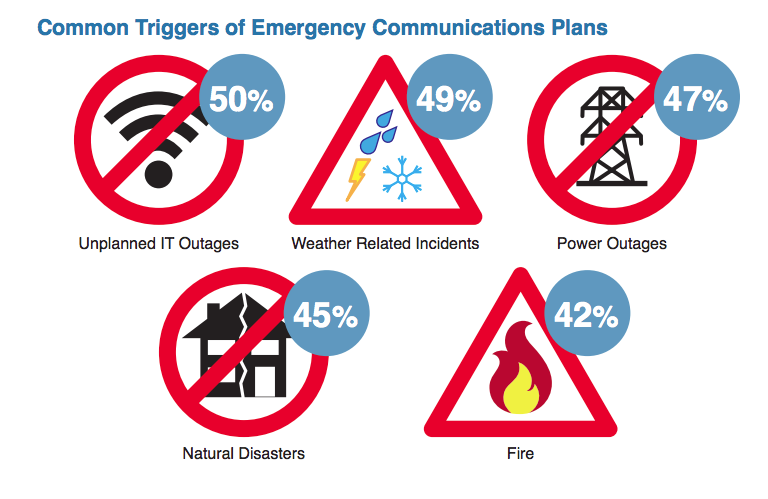
If a school or business already has communications systems in place, these can be used as channels by a third-party application such as PunchAlert for centralized emergency communications; alternatively, if the audience size or physical space requires, signage, voice and phone alerts can be used as separate channels but coordinated centrally.
We’ve developed a partnership with PunchAlert, giving Rise Vision customers three free licenses. PunchAlert can be incorporated into the Rise Vision control panel, and PunchAlert notifications can easily be displayed directly on Rise Vision signage.
Check out this webinar for instructions on adding PunchAlert functionality to Rise Vision signage:
Alternatively, smaller institutions can use digital signage solutions as part of a less integrated CAP/ENS. Rise Vision comes with specifically-designed emergency alert templates that will capture audience attention, including fire:
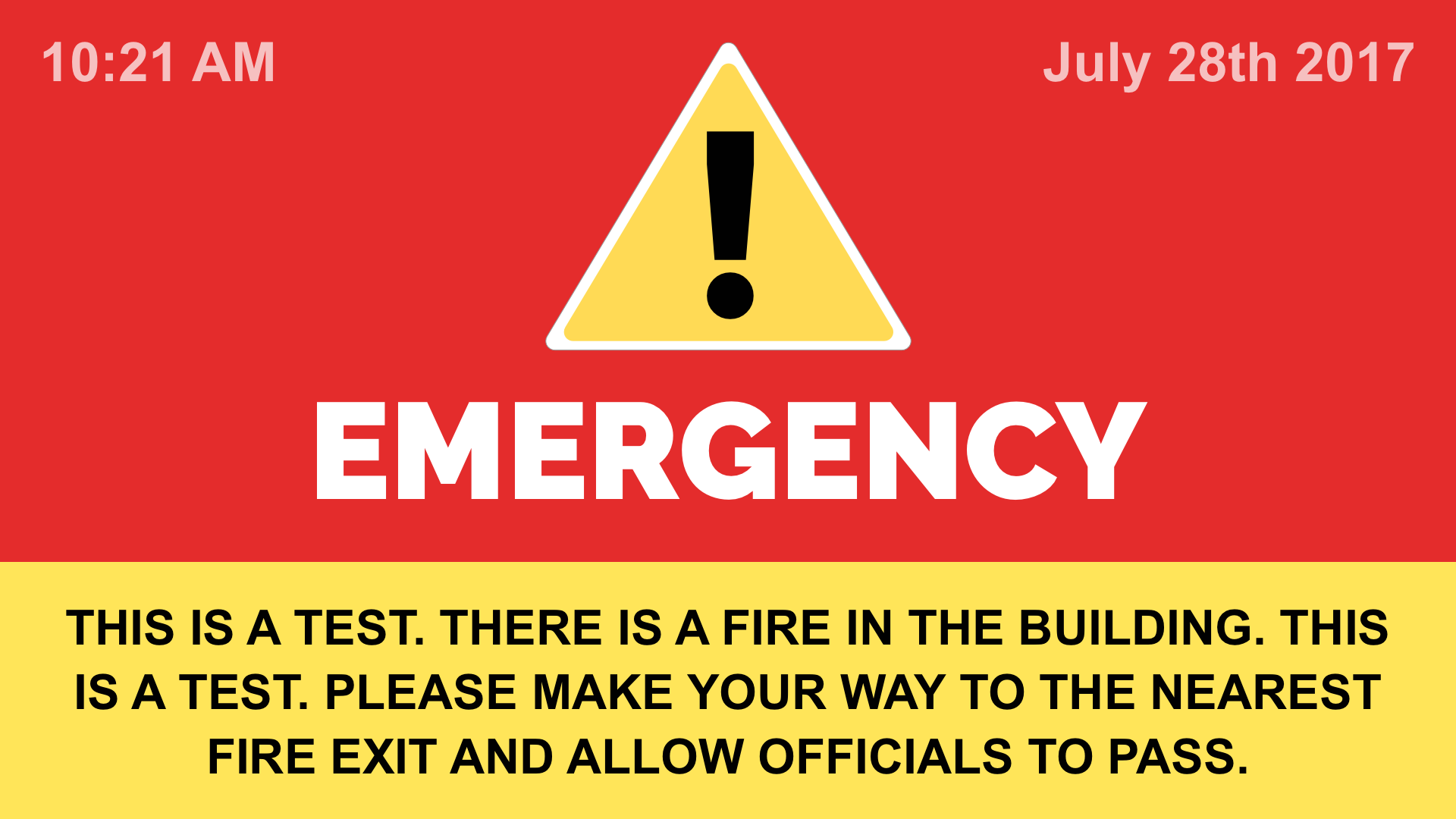
In addition, Rise Vision integrates with a range of ENS providers, seamlessly displaying their messaging across your digital signage.
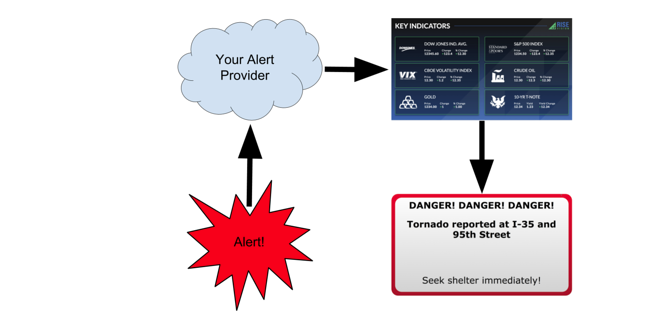
To use this, log in to your Rise Vision dashboard and type search for the CAP alert warning template, select it from the search results and add it to your account.
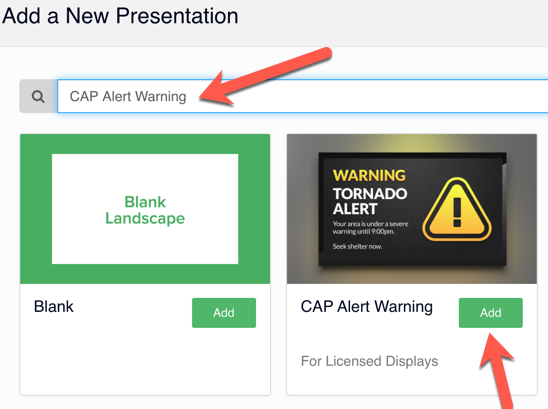
Turn on Alerts in your Rise Vision account by clicking your account name and then Alert Settings:

From here you can connect your CAP seamlessly and add Rise Vision to your ENS.
Conclusion
Emergency notification systems are multifunctional, making a potentially life-saving difference in genuine crises and facilitating effective communication across organizations.
They don’t have to be off-the-shelf CAP/ENS solutions; many smaller organizations bundle several providers together to successfully communicate by signage, text and email from a central plan without having dedicated software.
But they do work best when they reach audiences on the channels they use, which is why so many workplace ENSs start with email. And they’re most effective when everyone knows how to operate them ahead of time.
If you already have a Rise Vision account, you can set up your free licenses through our partnership with PunchAlert now.
Additional Information
More From Our Blog
-

How to Use PowerPoint for Digital Signage
To create stunning, attention-grabbing, and effective digital signage content, you need the help of content creation and presentation tools. One of the most popular is Microsoft PowerPoint, owing to[…]
Read More -
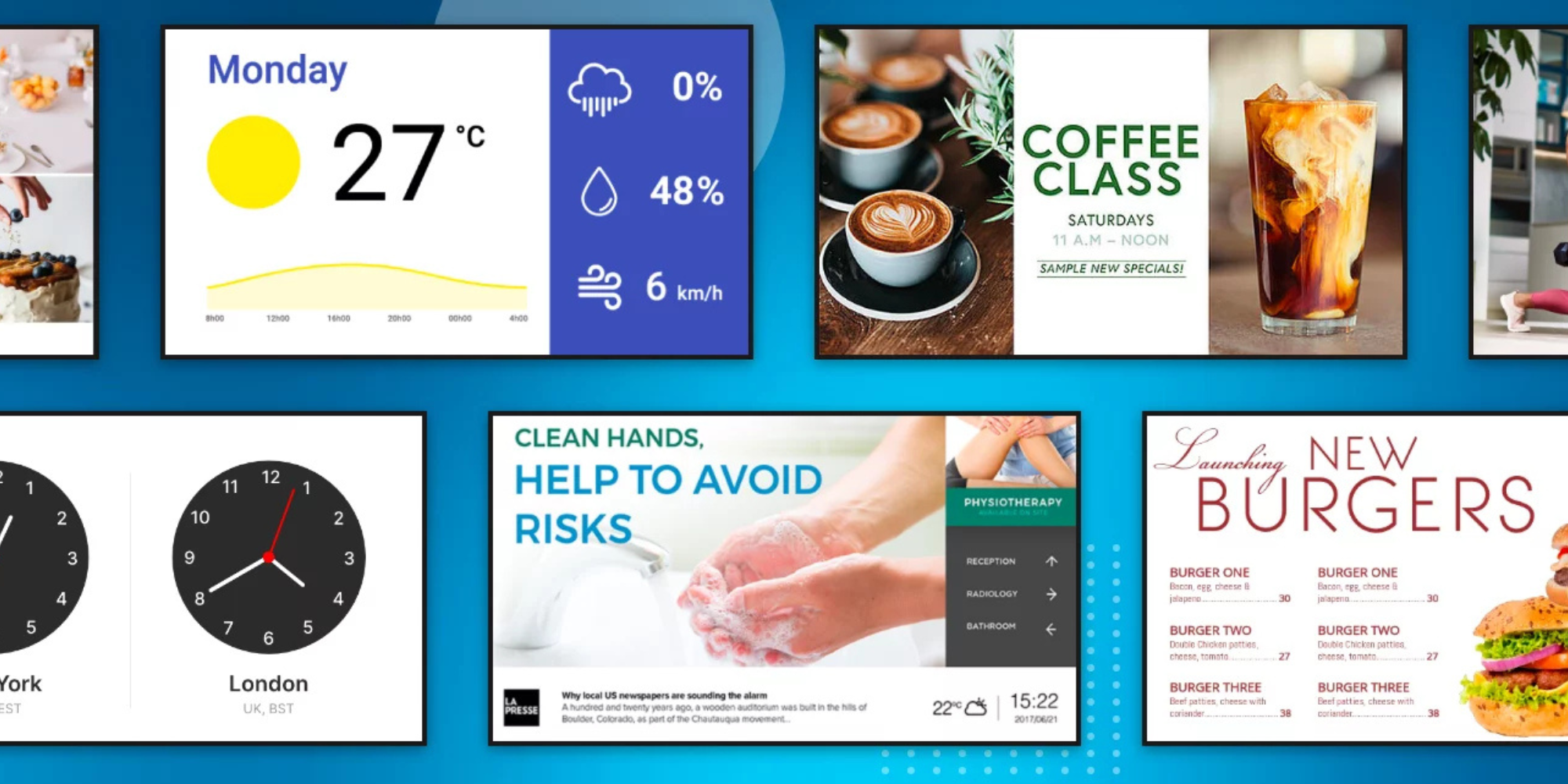
120 Digital Signage Content Ideas
So…. you decided you would invest in some digital signage software and you need some ideas for ways you can make it stand out. This article is your go-to source for the best digital signage content[…]
Read More -

2025 Digital Signage Benefits and Statistics
The digital signage industry has been growing steadily for years now, and it shows no signs of stopping anytime soon. Businesses all over the world are investing in digital signage systems, be it for[…]
Read More
Keep Your Displays Interesting – Pick New Templates Every Week!
Every week, we send template recommendations that will make you look great and improve your audience experience. And the best part, they save up to 16 hours of content creation time every week!
12,300+ Organizations Trust Rise Vision, You Can Too
Schedule a Free Demo
You deserve the #1 all-in-one platform for digital signage, screen sharing, and emergency alerts.



































